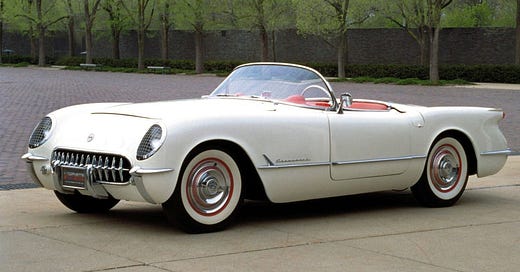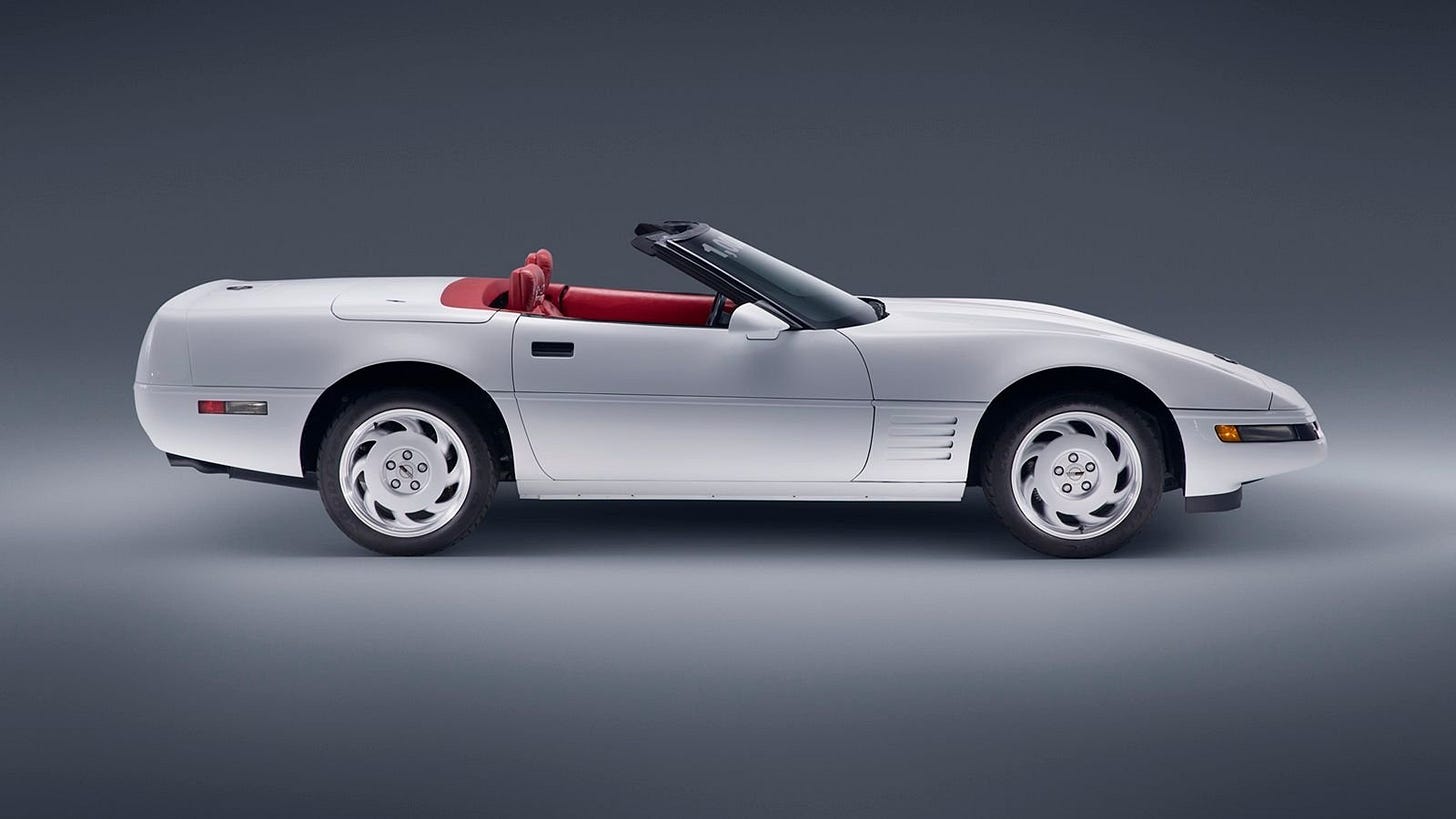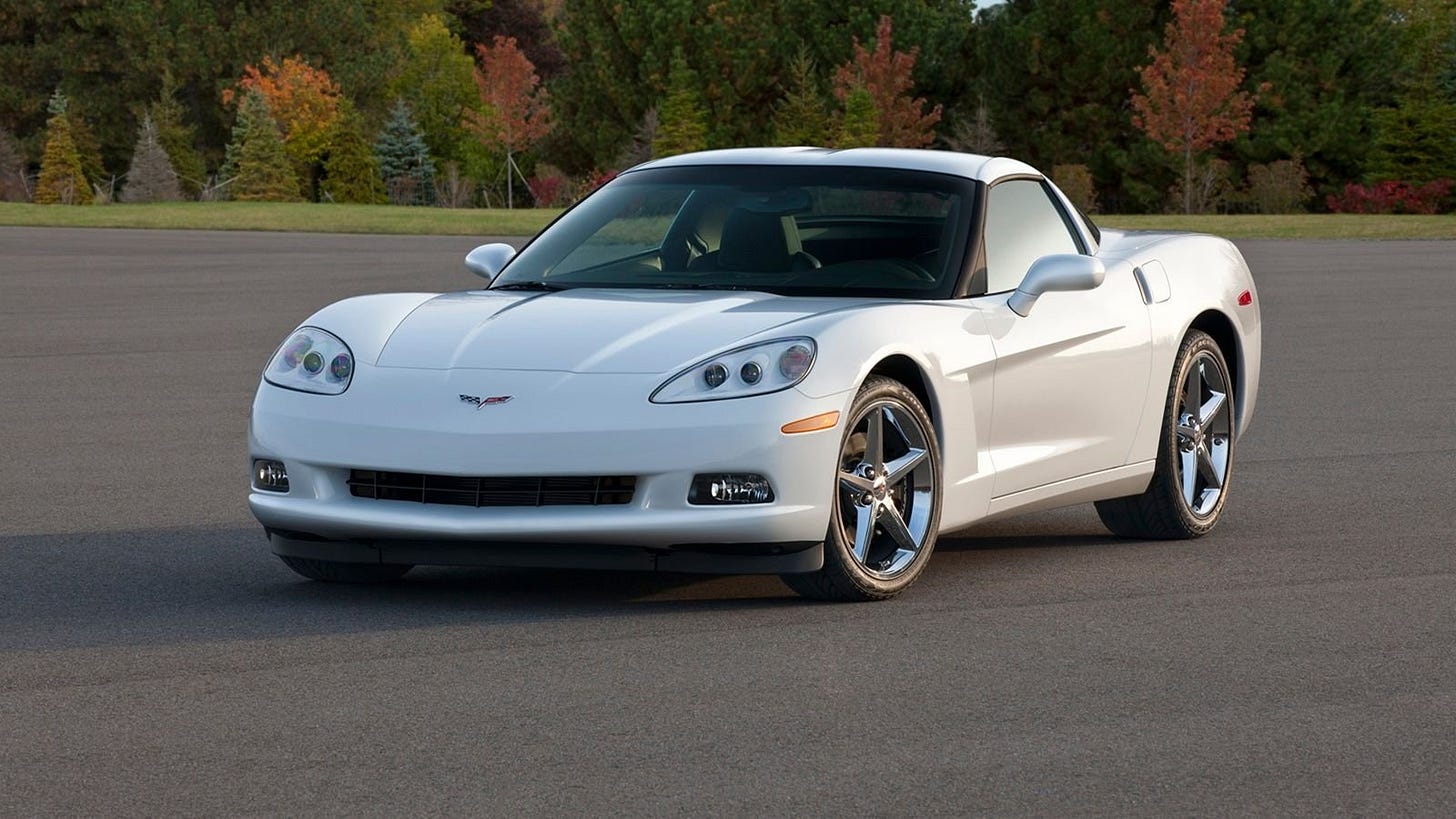Six Times the Corvette Nearly Got Canceled
It hasn’t always been smooth sailing for the Corvette over its 70 years
I’m not sure about some of the suppositions the author made in this Corvette Forum article, so I want to issue a disclaimer and note that some of these six cancellation threats could be argued, while others are well-documented.
The Chevrolet Corvette has been in production for over 70 years, which is longer than any other sports car in the world. The Corvette has continued through an oil crisis, financial crisis, bankruptcy, and pandemic. However, there have been half a dozen times when the life of the Corvette could have been cut short but somehow managed to survive and in some cases thrive.
Cancellation Threat #1: Aligning Cost and Features with Demand
The Corvette struggled even in the first year of production and was considered a disappointing failure by some. First, it was quite a bit more expensive than many other offerings with an MSRP of about $3,500. In addition to that, it was offered with only the 2-speed Powerglide automatic transmission and 150 horsepower “Blue Flame” inline-6 cylinder engine. The public was not very enthusiastic about this new “sports car” from Chevrolet and early reviews were not positive, to say the least.
But Chevrolet didn’t lose hope and in 1954 lowered the price to under $2800 in an attempt to entice younger buyers. This 20 percent price cut gave the Corvette a little breathing room while Chevrolet figured out a strategy to establish a following for their new car.
Cancellation Threat #2: Continued Low Sales in EarlyYears
In 1955, Chevrolet sold only 700 Corvettes. Ford had brought the Thunderbird to market in 1955 and it outsold the Corvette by a margin of 23 to 1, with over 16,000 sold. The T-bird was powered by a V8 engine which seemed to resonate with the buying public. This prompted Chevrolet to offer the small block V8 engine in the Corvette.
The Chevy small block V8 produced 195 horsepower and significantly improved the performance of the Corvette. A manual transmission was also offered which seemed to enhance the Corvette’s appeal. Sales in 1956 shot up to nearly 3,500, by 1957 sales nearly doubled again to over 6,300 units, and over 9,000 were produced in 1958. The Corvette now had a competitor which drove continued innovation and improvement.
Cancellation Threat #3: C4 Design Issues Leading to Delayed Introduction
The C3 generation spanned the range from high-performance big block engines in the early years to emissions-choked engines by the mid-70s. The C3 was finally going to be replaced by the C4 model in 1983 to make the Corvette the most technologically advanced ever.
Unfortunately, there were delays attributed to redesigning the roof from a T-top to a targa design. The loss of rigidity caused significant issues and took about a year to work out. This caused considerable angst among Chevrolet executive staff when the 1983 model year was scrapped. But the C4 again survived and was finally introduced as a 1984 model with great interest from the public.
Cancellation Threat #4: Lower Sales the Last Few Years of the C4
Although the C4 Corvette had produced steady sales, by 1992 sales were slowing. For perspective, in it’s first year, Chevrolet sold over 50,000 Corvettes. By 1992, that figure was reduced to just over 20,000. Even worse, GM had lost $23.5 billion in the previous fiscal year. Building a relatively low-volume sports cars came into question, so the next-generation C5 Corvette program was cancelled.
Russ McLean, director of manufacturing for GM in Mexico was asked to save the Corvette. McLean told Car and Driver: “The C5 program was not approved. We were at the bottom of the heap on quality and customer satisfaction and [were] losing a significant amount of money on each car built.” The money needed to save the C5 program was finally found and the C5 Corvette debuted in 1997.
Cancellation Threat #5: GM Bankruptcy
The Great Recession started in late 2007 and was the worst economic downturn since the Great Depression in 1929. In 2009, fewer than 17,000 Corvettes were sold, and in June of 2009, GM filed for Bankruptcy protection. The future looked dim not just for the Corvette but for the entire company. Even though the economy was in tatters, the Corvette continued selling enough units to stay afloat.
But during this upheaval, the awesome LS3 engine was introduced for the 2008 model year and then the incredible C6 ZR1 came out in 2009. Luckily, the U.S. Treasury Department team that was working on the GM Chapter 11 filing saw that the Corvette was profitable and an important brand for GM and America. The Corvette program was spared once again.
Cancellation Threat #6: Lower Sales Again by 2012
Despite the Corvette brand being saved in 2009, sales were still poor: 12,194 were sold in 2010, 13,596 in 2011, and 11,647 in 2012. That was the lowest three-year total since 1959 – 1962.
The budget for GM coming out of bankruptcy was very tight and closely scrutinized. However, there were strong advocates for the Corvette who fought hard to keep it alive. They knew that the brand needed something fresh and new, and when the C7 came out in 2014, and sales nearly tripled from the year before. By 2016, GM sold over 40,000 Corvettes, and the car was once again on track for future success.
The full article is here:




